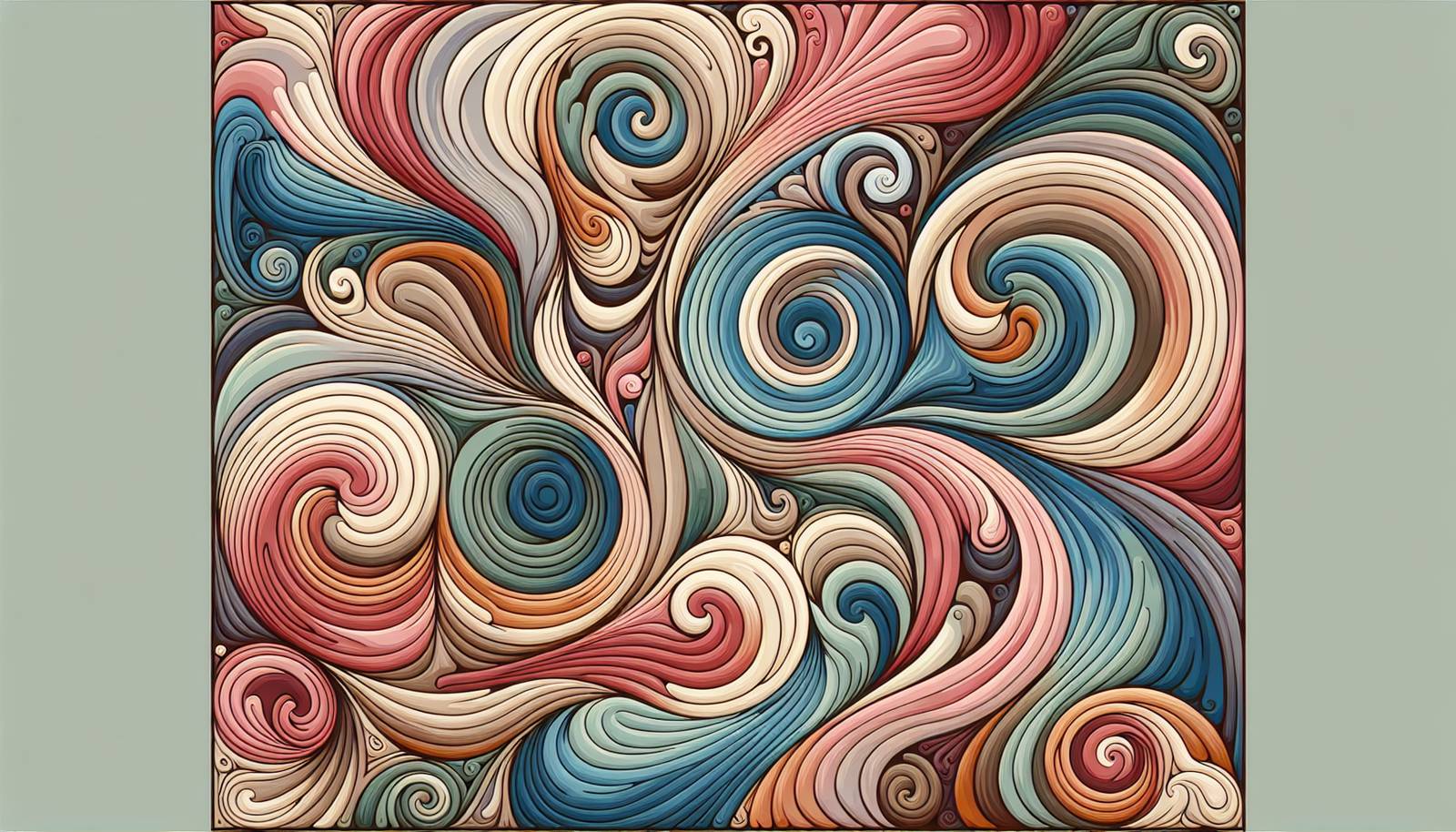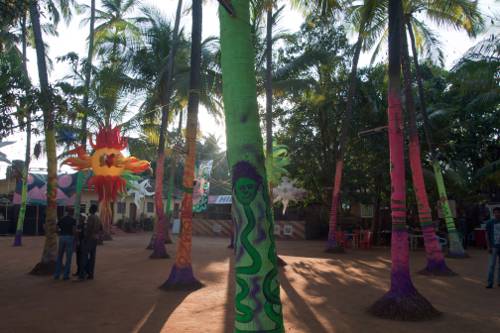
FAQ About The Influence of Psychedelic Art on Culture

What is psychedelic art?
Psychedelic art is a visual art style that emerged in the late 1960s and is characterized by vivid colors, surreal imagery, and often intricate patterns. It seeks to evoke or visually represent the experience of altered states of consciousness, often associated with the use of psychedelic drugs such as LSD or psilocybin mushrooms.

How did psychedelic art influence popular music?
Psychedelic art has significantly influenced popular music, particularly in the 1960s and 1970s. Album covers, poster art, and stage designs featured psychedelic visuals, enhancing the sensory experiences associated with the music of bands like The Beatles, Pink Floyd, and The Grateful Dead. This era saw music that aimed to reflect the same mind-expanding themes inherent in psychedelic art.

In what ways has psychedelic art impacted the film industry?
The film industry embraced psychedelic art for its ability to visually capture the essence of altered states and surrealism. Films from the 1960s and 1970s, like 'Yellow Submarine' and '2001: A Space Odyssey,' incorporated psychedelic visuals to expand cinematic storytelling. This influence continues today with movies using vivid color palettes and dream-like sequences inspired by this art form.

What are common elements found in psychedelic art?
Common elements of psychedelic art include bright, contrasting colors, kaleidoscopic patterns, surrealist imagery, and the blending of abstraction with reality. Often these artworks incorporate fractals, swirling motifs, and symmetrical designs to evoke an immersive experience.

Can you provide examples of famous psychedelic artists?
Notable psychedelic artists include Peter Max, known for his bold use of color and cosmic themes, and Wes Wilson, a designer of iconic concert posters. Others like Alex Grey have gained recognition for detailed pieces that explore themes of spirituality and consciousness.

How does psychedelic art challenge perceptions?
Psychedelic art challenges perceptions by breaking conventional boundaries of color, form, and perspective. It invites viewers to experience a different reality and question their visual understanding, often rendering the familiar unfamiliar and prompting reflections on the nature of consciousness itself.

What role did psychedelic art play in the counterculture movement?
Psychedelic art played a pivotal role in the counterculture movement of the 1960s and 1970s by visually embodying the values of nonconformity and exploration of consciousness. It symbolized rebellion against mainstream norms, inspiring new expressions in social attitudes, music, and lifestyle.

Are there modern movements influenced by psychedelic art?
Yes, modern movements such as digital art and new media installations continue to be influenced by psychedelic art. Artists leverage digital platforms to expand on traditional psychedelic themes, incorporating virtual reality and immersive environments that mirror the mind-bending qualities of classic psychedelic artworks.

How did psychedelic art evolve over the decades?
Over the decades, psychedelic art has evolved from its roots in 1960s counterculture to incorporate contemporary digital techniques. Artists now experiment with virtual reality, animation, and interactive art to create dynamic works that continue to challenge perceptions and explore themes of consciousness and spirituality.

What distinguishes psychedelic art from other art styles?
Psychedelic art is distinguished by its focus on vibrant colors, intricate patterns, and surreal depictions aimed at evoking altered states of consciousness. Unlike other styles, it often emphasizes freeform creativity and experimental approaches, challenging viewers' perceptions and pushing the boundaries of traditional visual art.

How has psychedelic art been used in commercial design?
Psychedelic art has been used in commercial design, notably in advertising, fashion, and product packaging. Its eye-catching aesthetics attract consumer attention, making it a popular choice for brands seeking to evoke a sense of freedom, creativity, and exploration, particularly in youth-oriented market segments.

What is the connection between psychedelic art and spirituality?
Psychedelic art often explores themes of spirituality and consciousness, visually representing the transcendent experiences that many associate with spiritual awakening or exploration. Artists may use symbolism and abstract forms to depict divine or mystical encounters, bridging the gap between the visual arts and spiritual exploration.

What materials and techniques are commonly used in creating psychedelic art?
Artists creating psychedelic art often use traditional mediums such as acrylic and oil paints but also incorporate digital tools for modern interpretations. Techniques involve bold color contrasts, symmetrical designs, and fluid, organic forms. The use of light and shadow can also play a crucial role in enhancing depth and vibrancy.

Are there any famous gallery exhibitions dedicated to psychedelic art?
Yes, several renowned galleries and museums have hosted exhibitions dedicated to psychedelic art. For instance, the 'Summer of Love' exhibition at the Whitney Museum of American Art celebrated the art from the 1960s counterculture movement. These exhibitions frequently explore the historical context and legacy of psychedelic aesthetics.

What historical events influenced the rise of psychedelic art?
The rise of psychedelic art was significantly influenced by the social movements of the 1960s, including the rise of youth counterculture, civil rights activism, and anti-war protests. The popularization of psychedelic music and the widespread use of hallucinogenic substances also played roles in its development during this period.

How do digital tools impact the creation and distribution of psychedelic art today?
Digital tools have greatly impacted the creation and distribution of psychedelic art by making it more accessible and versatile. Artists can use software to create intricate designs and animations, reaching a global audience quickly through online platforms. This democratization has led to new forms of interactive and immersive art experiences.

What is the relationship between psychedelic art and mental health awareness?
Psychedelic art efforts often align with growing awareness around mental health, as both seek to explore and express the complexities of the human mind. Some artists use their work to address themes of mental health, healing, and transformation, potentially providing therapeutic benefits to both creator and viewer.

How does psychedelic art explore the concept of consciousness?
Psychedelic art explores consciousness by visualizing the abstract nature of thoughts and perceptions beyond ordinary reality. It often portrays dream-like scenes or spiritual motifs that suggest expanded mental states, encouraging viewers to reflect on their own consciousness and its potential depths.

Why is color so important in psychedelic art?
Color is crucial in psychedelic art because it stimulates the senses and can transform perception, which is a central theme of this style. Bright, contrasting colors enhance the immersive experience, evoke emotional responses, and highlight the often surreal, otherworldly nature of the artwork.

What impact did psychedelic art have on graphic design?
Psychedelic art had a profound impact on graphic design by introducing new visual styles that emphasized freedom, vibrancy, and non-linear narratives. It influenced the creation of more expressive and dynamic compositions, especially in advertising, album covers, and poster designs, encouraging designers to break away from traditional layouts and experiment with unconventional forms and palettes.
